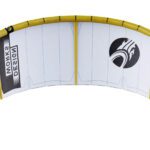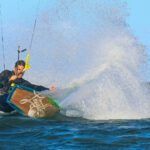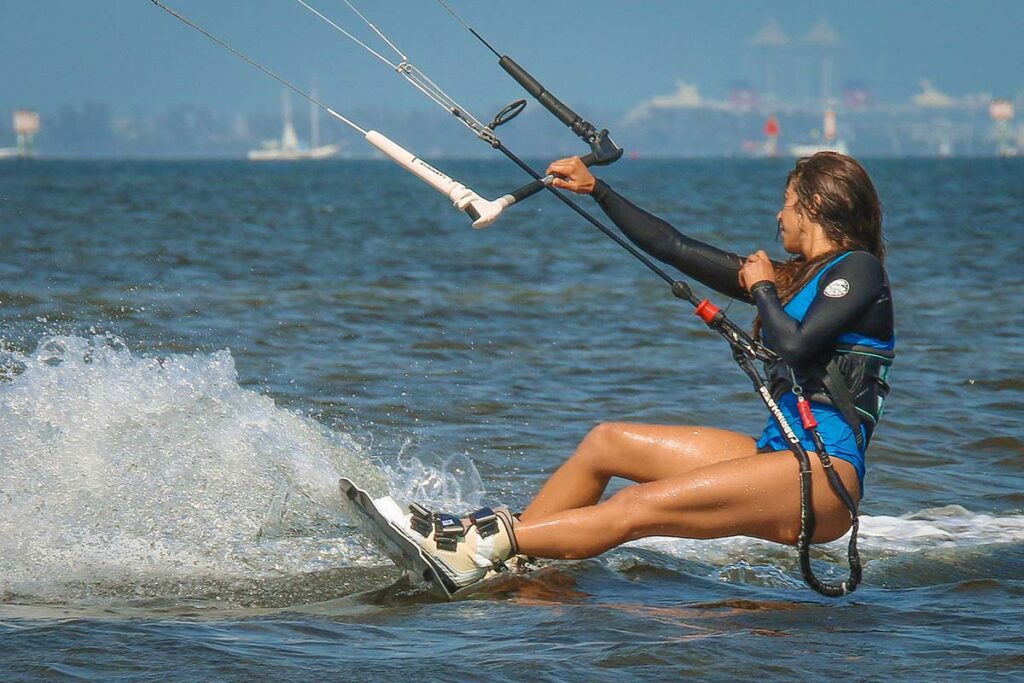
Kiteboarding: A Comprehensive Guide to the Extreme Water Sport
Introduction:
Kiteboarding is a water sport combining surfing, windsurfing, and paragliding elements. It involves using a kite to harness the power of the wind to propel yourself across the water on a board. Kiteboarding can be done in various conditions, from flat water to waves, and it is a great way to get exercise, enjoy the outdoors, and have fun.
Brief History of Kiteboarding
Kiteboarding had its roots in the early 1900s when people began experimenting with using kites to fly through the air. In the 1970s, kitesurfing was developed, which involved using a kite to propel yourself across the water on a surfboard. As we know it today, kiteboarding developed in the 1990s when kitesurfers began using smaller, more maneuverable kites and boards.
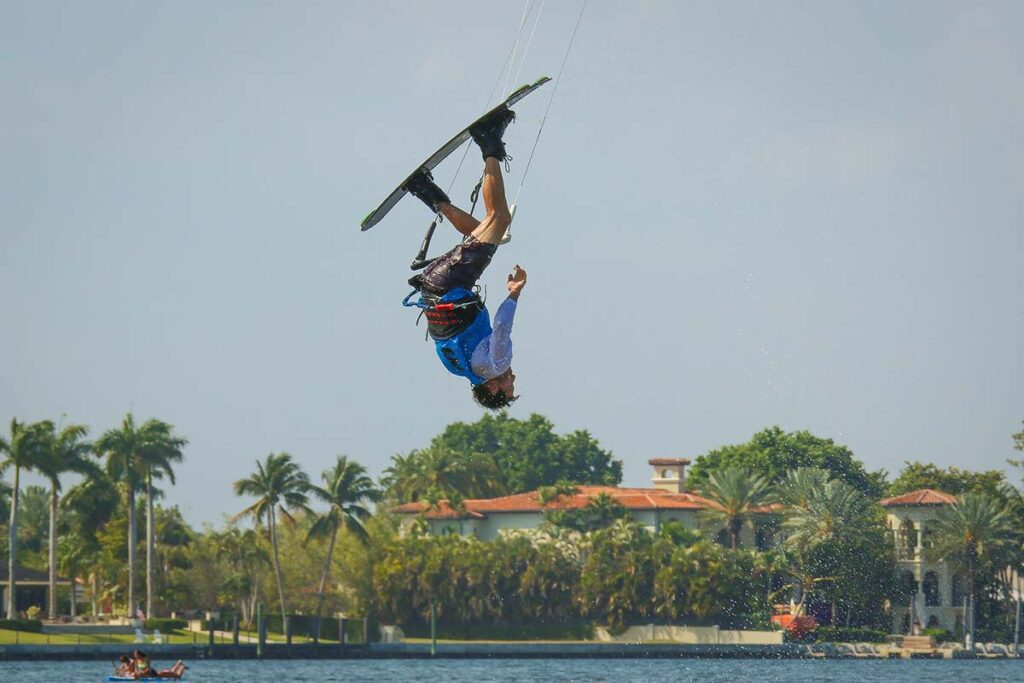
Why Kiteboarding is Becoming More Popular
Kiteboarding is becoming increasingly popular for several reasons:
- It is a great way to get exercise. Kiteboarding is a full-body workout that can burn hundreds of calories per hour.
- Kiteboarding is a fun and challenging sport that people of all ages and skill levels can enjoy.
- Kiteboarding can be done in various locations, from beaches to lakes to rivers.
Equipment
The two leading equipment needed for kiteboarding is a kite and aboard. Kites come in various sizes and shapes, and the right kite for you will depend on your skill level and the conditions you will be riding in. Boards also come in various sizes and shapes, and the right board for you will depend on your weight, height, and riding style. In addition to a kite and a board, you will also need a harness, a helmet, and a leash.
Kiteboarding Techniques
There are several different kiteboarding techniques that you will need to learn, including:
- Kite setup: This is the process of assembling your kite and attaching it to your harness.
- Launching and landing: This is the process of safely getting your kite in the air and back on the ground.
- Kite control is the process of controlling your kite in the air.
- Steering: This is the process of controlling your board while riding.
- Power management: This is controlling the amount of power your kite generates.
- Upwind riding: This is the process of riding upwind, which is against the direction of the wind.
- Tricks and jumps: This is performing tricks and jumps while riding.
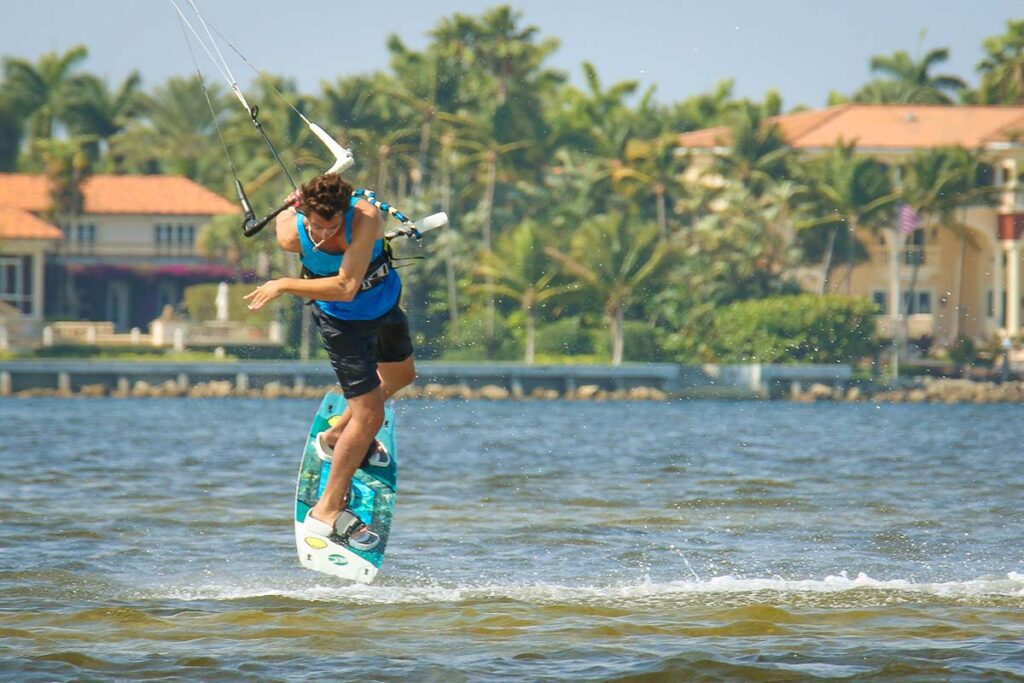
Conditions and Locations
Kiteboarding can be done in various conditions, but the best conditions are light to moderate winds with flat water. If the wind is too strong, it can be dangerous to kiteboard. If the water is choppy, it can be challenging to control your board.
The best locations for kiteboarding are beaches, lakes, and rivers. Beaches are a great option because they offer a large open area for riding. Lakes and rivers are also good options, but they may have more restrictions on where you can kiteboard.
Safety
Kiteboarding can be a safe sport, but it is important to take precautions to stay safe. Some of the most important safety tips include:
- Always wear a helmet.
- Kiteboard in an area that is away from other people and objects.
- Be aware of the wind conditions, and don’t kiteboard in strong winds.
- Be aware of the water conditions, and don’t kiteboard in choppy water.
- Learn how to control your kite and board in all conditions.
- Take lessons from a qualified instructor before you start kiteboarding.

Fitness and Health Benefits
Kiteboarding is a great way to get exercise. It is a full-body workout that can burn hundreds of calories per hour. Kiteboarding can also help to improve your balance, coordination, and strength. In addition to the physical benefits, kiteboarding can have several mental health benefits. It can help to reduce stress, anxiety, and depression. It can also help to improve your mood and self-esteem.
Sustainability and Environmental Impact
Kiteboarding can be a sustainable sport. It is a non-motorized sport that does not produce emissions. Kiteboarding can also be a low-impact sport. It does not damage the environment or disturb wildlife.
Getting Started
If you are interested in learning how to kiteboard, there are a few things you need to do. First, you need to find a qualified instructor.
Author
Latest entries
 WatersportsSeptember 16, 2024Cabrinha Moto X: Enjoy the Ride
WatersportsSeptember 16, 2024Cabrinha Moto X: Enjoy the Ride WatersportsMay 19, 2024Cabrinha 2024 Moto XL Review: The Ultimate Lightwind Kite
WatersportsMay 19, 2024Cabrinha 2024 Moto XL Review: The Ultimate Lightwind Kite WatersportsDecember 16, 2023Kiteboarding Travel
WatersportsDecember 16, 2023Kiteboarding Travel WatersportsDecember 14, 2023RED BULL KING OF THE AIR 2023
WatersportsDecember 14, 2023RED BULL KING OF THE AIR 2023

